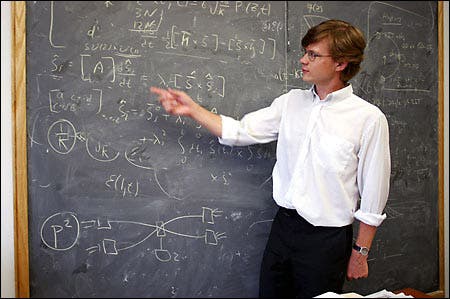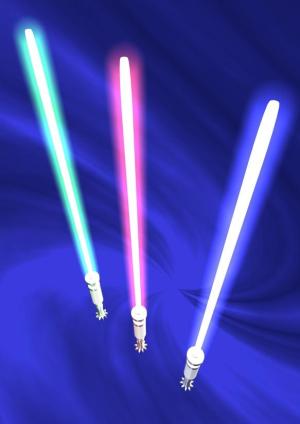Photons and molecules

Scientists managed to ‘trick’ photons (the elementary particles of light and all other forms of electromagnetic radiation) into forming molecules for the first time – a state of matter that until recently had been purely theoretical.
Scientists from Harvard University and the Massachusetts Institute of Technology (MIT) are challenging the current paradigm – they want physicists to rethink what they know about light, and they didn’t have to go in another galaxy to do this.
What happened is that a group led by Harvard Professor of Physics Mikhail Lukin and MIT Professor of Physics Vladan Vuletic managed to coax photons into binding together to form molecules. The discovery goes against decades of accepted theories and ideas on light. Photons have constantly been described as massless particles that don’t interact with each other (they are only considered to have a mass when they are moving). Shine two photon lasers at each other, and the rays will simply pass through each other – photonic molecules seems a nonsensical term.“Most of the properties of light we know about originate from the fact that photons are massless, and that they do not interact with each other,” Lukin said. “What we have done is create a special type of medium in which photons interact with each other so strongly that they begin to act as though they have mass, and they bind together to form molecules. This type of photonic bound state has been discussed theoretically for quite a while, but until now it hadn’t been observed.
What they did isn’t really a photon laser, but rather a… light saber.
Using the Force

“It’s not an inapt analogy to compare this to light sabers,” Lukin said. “When these photons interact with each other, they’re pushing against and deflecting each other. The physics of what’s happening in these molecules is similar to what we see in the movies.”
But Harvard researchers can’t really rely on “The Force”, so instead, they began by pumping rubidium atoms into a vacuum chamber. After a while, they used lasers to cool the cloud of atoms to just a few degrees above absolute zero (the lowest thermodynamic temperature – −273.15° on the Celsius scale, −459.67° on the Fahrenheit scale). Then, using very weak lasers, they fired single photons into the cloud of atoms. As the photons enter the cloud, they give energy to atoms along their path, which causes them to slow dramatically. As the photons move through the cloud, that energy is handed off from atom to atom, and eventually exits the cloud with the photon.
“When the photon exits the medium, its identity is preserved,” Lukin said. “It’s the same effect we see with refraction of light in a water glass. The light enters the water, it hands off part of its energy to the medium, and inside it exists as light and matter coupled together. But when it exits, it’s still light. The process that takes place is the same. It’s just a bit more extreme. The light is slowed considerably, and a lot more energy is given away than during refraction.”
But when Lukin and his colleagues fired two photons into the cloud, they were really surprised to see the results – the two photons came out of the cloud together, as a single molecule. This is the effect of a rather strange and unintuitive effect, called the Rydberg blockade, which means that when an atom is excited, nearby atoms cannot be excited to the same degree. What this means for this case in particular, is that as the first photon excites an atom, it must move forward before the second one can excited nearby atoms. What’s interesting is that they tend to retain this molecule-like behavior even after exiting the cloud.
This could prove to be valuable for developing quantum computers; quantum logic requires interactions between individual quanta so that quantum systems can be switched to perform information processing.
“What we demonstrate with this process allows us to do that,” Lukin said. “Before we make a useful, practical quantum switch or photonic logic gate, we have to improve the performance. So it’s still at the proof-of-concept level, but this is an important step. The physical principles we’ve established here are important.”
The process could be used in the future to create 3D structures, such as crystals, solely out of light.
“What it will be useful for we don’t know yet. But it’s a new state of matter, so we are hopeful that new applications may emerge as we continue to investigate these photonic molecules’ properties,” he said.




